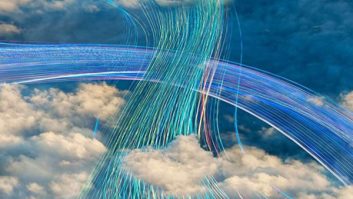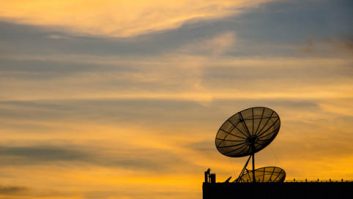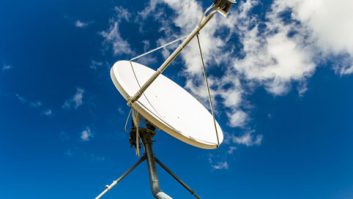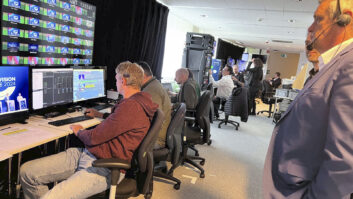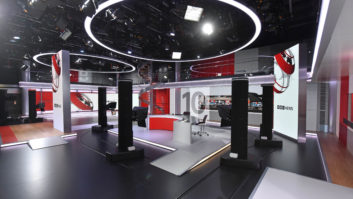Elections are major broadcast events in the UK, both for the viewing and listening audiences they draw in and the sheer logistics involved in covering the build-up and polling day itself, While there is now considerable focus on the debates between party leaders – although British TV did not stage its first until 2010 – along with gauging the mood of the nation by talking to potential voters in key constituencies, the real focus will be on election night after the polls close and the vote count begins.
For this year’s election, the BBC is aiming to cover as many of the 650 parliamentary seats as possible, or at least have a presence at the ones most under scrutiny. “We have an ambition to be at an awful lot of those, if not every one, in vision,” comments Morwen Williams, head of BBC media operations. “If not, we will definitely have someone editorially at every one. We are trying to get a significant amount of extra cameras out and that will range from mobile phones to full OB trucks.”
BBC TV’s first live broadcast of election results was in 1950, since then the coverage has grown considerably, with increasing numbers of live declarations from constituencies and ever more analysis in the studio of what they mean for the country. The obvious example of the latter is the Swingometer, a graphical representation of the shift in voting for the main parties. During the late 1960s and through the ’70s this was presided over by Canadian politics professor and statistical analyst Robert McKenzie; a virtual version, with a background of the House of Commons chamber, is now in the charge of Jeremy Vine.

Over the last ten years, the UK has had three general elections (2015, 2017 and 2019). Williams says incremental developments have been made in the technology used to get the results from the constituencies on air during this time. “There’s been a significant change since 2015 and some change since 2019,” she comments. “The big technical one has been in connectivity from the different locations. The places where the counts are held and announced are leisure centres and town halls, which all have good Wi-Fi these days. We can tap into that with a cellular bonded backpack and we’ll be doing that at quite a number of places using different products because we know it will be rock solid with no contested bandwidth.”
This year’s election was called for 4th July, a snap announcement that set the date much earlier than many political commentators predicted. But in terms of the broadcast coverage, preparations were already underway before the date was known. “It would have been too late to start planning things when the election was called,” explains Williams. “We knew there had to be an election this year and knowing that our preparations have been going on [for some time]. Originally the thinking was that it would be an autumn or November election and I’d been involved in talks about the debates and potential locations for them. You can’t do something as complex as a presenter plus seven leaders being interviewed from scratch. Discussions about what we might want these to look and feel like started months ago.”
The same pre-planning applied to covering the declarations of results on election night, whenever it should happen to be. “It doesn’t even matter when the election is,” Williams says. “As soon as it’s announced that the count for a particular seat will be at a certain location, you try to see if it’s a known place, whether we’ve broadcast from there before and can our colleagues who work or live nearby go and look at it for us? If not and it’s a big one, we have to go and recce. You take decisions like that throughout the year.”
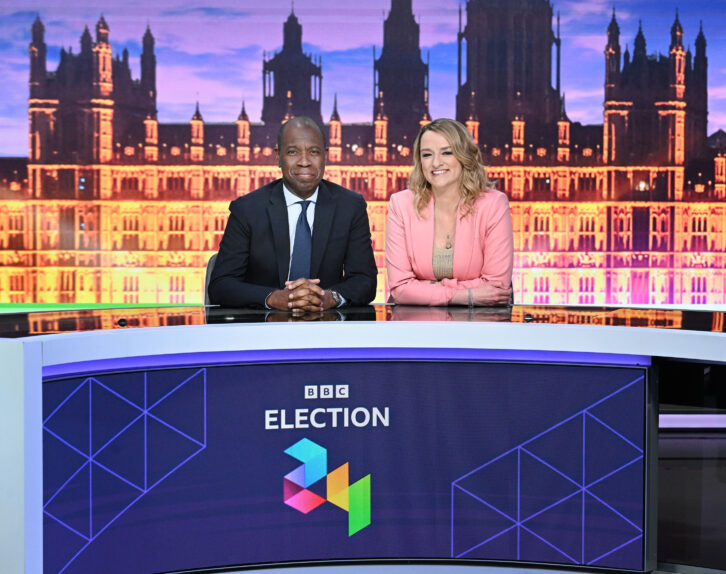
An example of this is where the count for Labour leader Sir Keir Starmer’s Holborn and St Pancreas seat would be held, which has been moved from its previous location. “We found out about that in 2023 and started to talk about what the IT and connectivity would look like,” Williams explains. “There are brilliant people who look at the 650 seats and rank the really key ones [to cover]. We absolutely have to be at the leaders’ constituencies and there are certain other ones, like Sunderland, which was always the first to declare [rival northeast city Newcastle took over this position in both 2017 and 2019]. That gives you something to talk about while you’re waiting for all the other results to come in.”
While some constituencies are logistically difficult to cover – Williams gives the example of Stoke-on-Trent, which has poor connectivity and so requires a truck with the added complication of a long cable run – others that are also important editorially are technically easy. While it would be possible to bring in an OB unit for such places it is not absolutely necessary. “There’s a wide range of BBC vehicles across the country, from little vans with a satellite dish on top to full OB trucks, of which we have about a dozen throughout the UK,” Williams continues. “There are also a few trucks we will have to hire in for the night from the freelance market. It’s a whole range from those to somebody with a mobile phone.”
This last element is another major development, not just for election coverage but newsgathering in general. “We all know how good MoJo – mobile phone journalism – is these days,” Williams agrees. “It means we can have cameras at every venue. There’s also the radio side – with reporters using phones and audio over IP systems – which is a separate programme from TV but they work together and are not planned separately. Although the picture quality on mobile phones is now very high, it’s really always about the audio. You can stand at the back of the room and get great pictures but the sound wouldn’t be good enough. We’re looking at ways to make as good an experience as possible in both sound and vision.”

Feeds from the constituencies will be carried over a variety of technologies, including IP, bonded cellular and satellite, to a central hub. For many years this was at the BBC’s Elstree Studios, which was also where the live election programme was produced. For the 2019 election, the presentation was moved to New Broadcasting House (NBH) in central London, while the hub remained at Elstree. This year both will be at NBH, with the main programme in Studio B, which usually houses the broadcaster’s daily news bulletins.
“We’ve brought the hub back [to NBH] and put in all the connectivity,” Williams explains. “It’s in a temporary area and we can spin it up and spin it down [in size] for all sorts of events. It’s a bigger hub with more television screens and we used it for the local elections in May. Everything is controlled centrally in NBH but there will also be other big elements of the TV programme in Cardiff, with Jeremy Vine and his Swingometer in the atrium of the broadcast centre there, and also Glasgow at the Pacific Quay studios, so we are doing quite a bit around the UK as well.”
This promises to be a dramatic and game-changing election for the UK. Technology will give everyone the opportunity to watch the results as they happen and see the reactions of those at the heart of one of this year’s biggest news stories.
